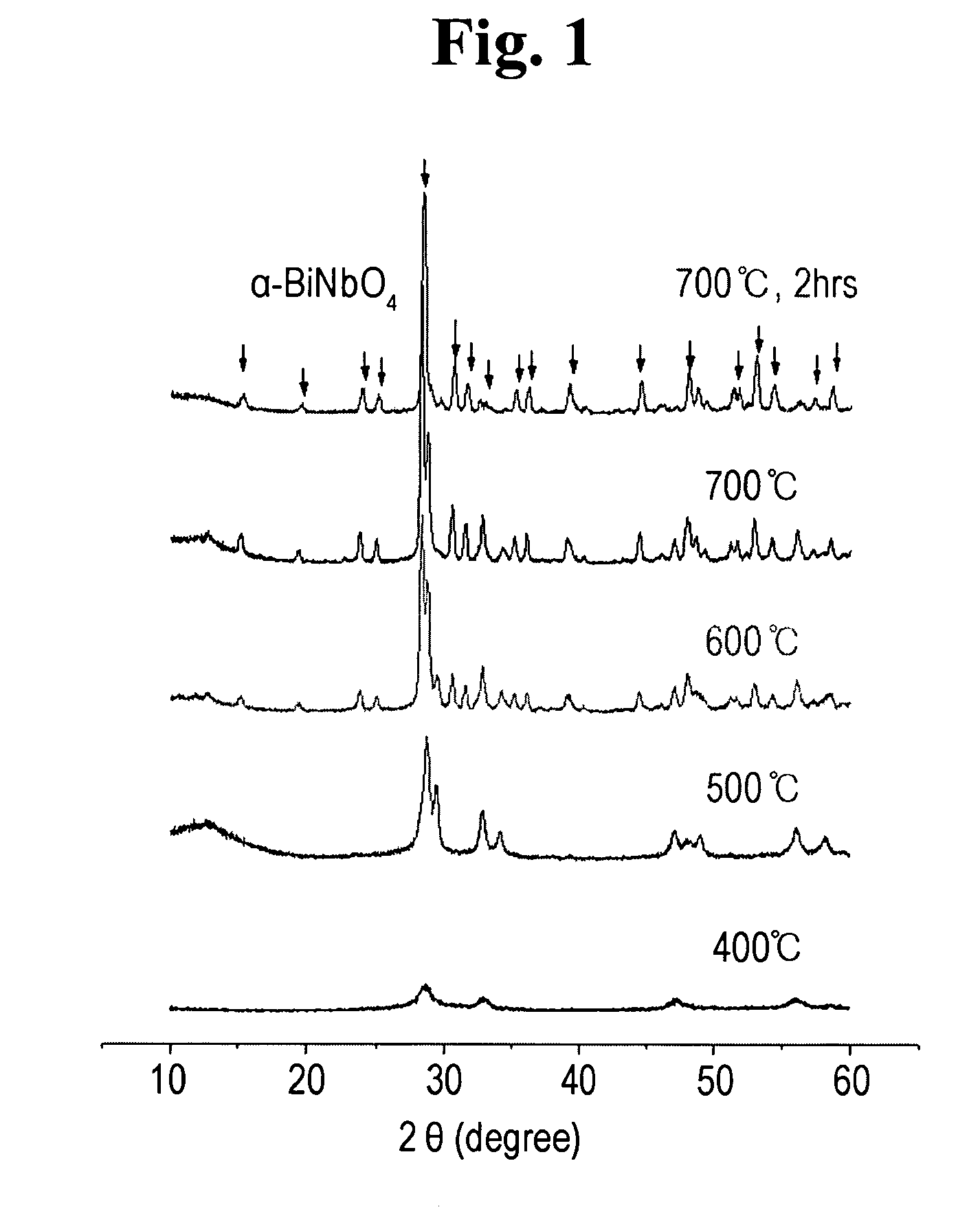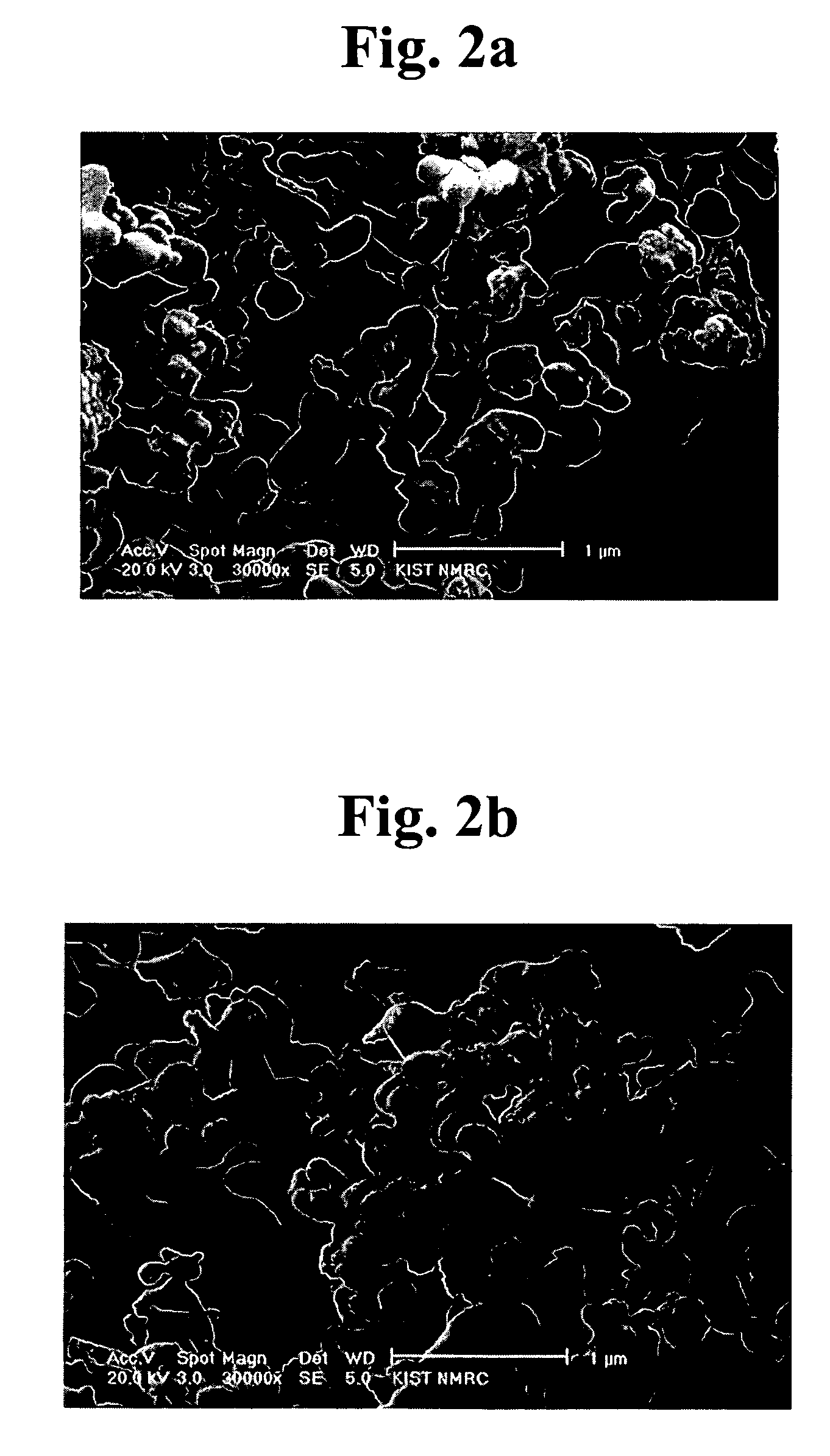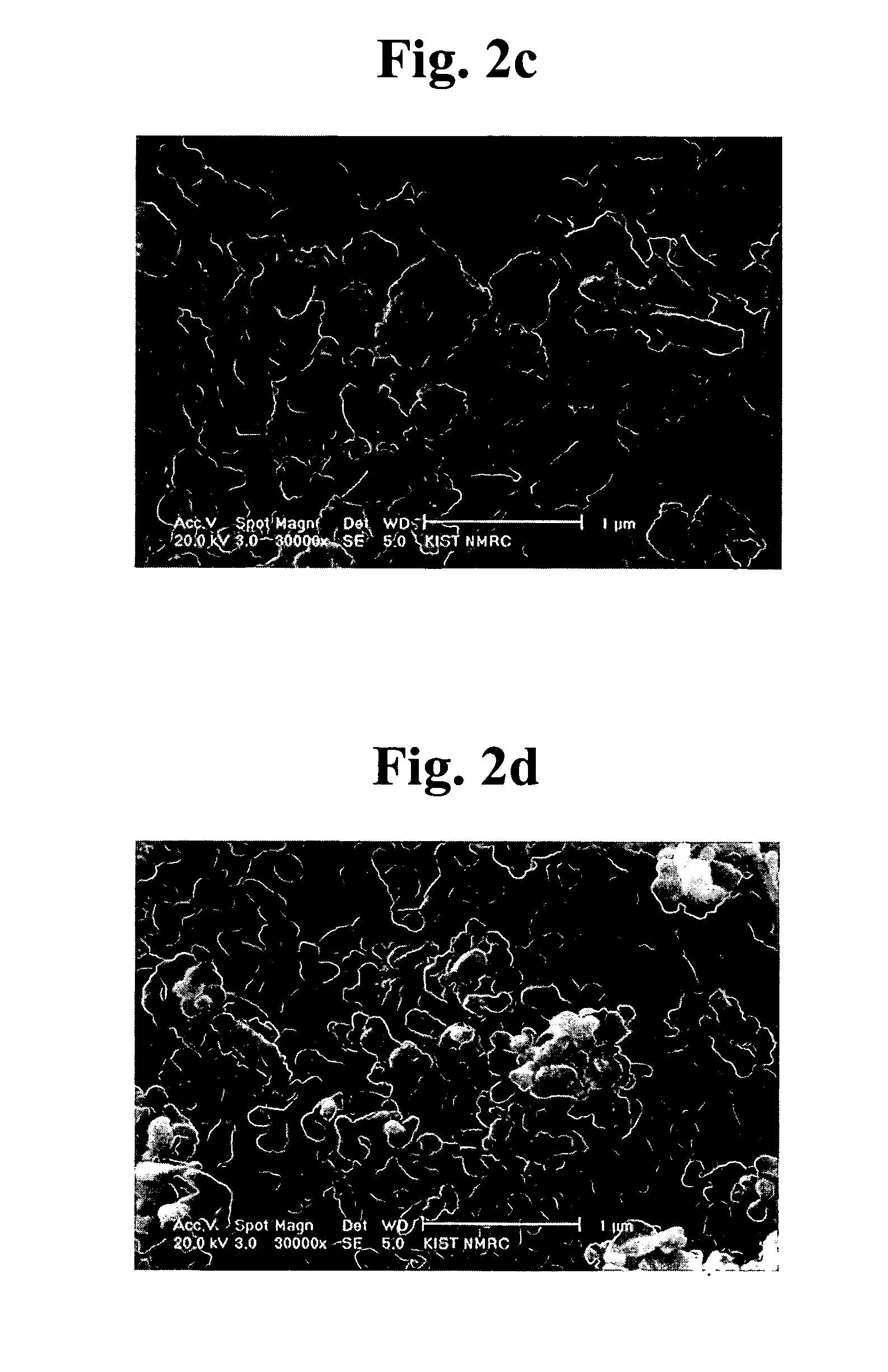Process of preparing low-temperature sintered microwave dielectric ceramics
- Summary
- Abstract
- Description
- Claims
- Application Information
AI Technical Summary
Benefits of technology
Problems solved by technology
Method used
Image
Examples
example 1
Preparation of Precursor Powders
[0058]NbCl5 was dissolved in conc.-HCl and then diluted with distilled water to obtain 1M of HNbCl6 solution. Bi(NO3)3.5H2O was dissolved in 12% HNO3 and then diluted with distilled water to obtain 1M of Bi(NO3)3 solution. Zn(NO3)2.6H2O was dissolved in distilled water to obtain 1M of Zn(NO3)2 solution. The HNbCl6 and Bi(NO3)3 or Zn(NO3)2 solutions were mixed at the stoichiometric ratio according to the composition ratios of final products, i.e., Bi / Nb=1 / 1 and Zn / Nb=3 / 2, respectively. Each mixture solution was added drop-wise to each 12% aqueous solution of the following precipitant: NH4OH, (NH4)2CO3, NH4HCO3 and n-butylamine to form a precipitation. The resulting precipitate was separated from the residue by vacuum filtering, followed by washing until the absence of the Cl− ion was checked by the reaction with AgNO3. The washed precipitate was frozen by cooling below 250 K to obtain the precursors of BiNbO4 and Zn3Nb2O8 in fine powders.
example 2
Preparation of Precursor Powders
[0059]1M of HNbCl6, which is obtained as described in Example 1, was added drop-wise to 25% aqueous ammonia to form Nb hydroxide. The resulting precipitate was separated from the residue by vacuum filtering, followed by washing until the absence of the Cl− ion. The hydroxide was dissolved in 1M of citric acid at 40° C., and then 1M of Bi(NO3)3 was added thereto. Then, the resulting citrate solution was spray-frozen by spraying it to liquid nitrogen using a pneumatic nozzle while stirring. The liquid nitrogen was removed by evaporation to obtain the precursor of BiNbO4 in a fine powder.
[0060]Also, the Nb-hydroxide, which is obtained as described above, was dissolved in 1M of oxalic acid at 40° C., and then 1M of Zn(NO3)2 was added thereto. The resulting oxalate solution was spray-frozen by spraying it to liquid nitrogen using a pneumatic nozzle while stirring. Then, the liquid nitrogen was removed by evaporation to obtain the precursor of Zn3Nb2O8 in a...
example 3
Preparation of BiNbO4 or Zn3Nb2O8 Powder
[0062]The precursor powders obtained in Examples 1 or 2 were subjected to thermal decomposition in a muffle furnace at a temperature of 600 to 800° C. in air to obtain BiNbO4 and Zn3Nb2O8 powders. A thermal process at a temperature of about 400 to 550° C. results in the completion of thermal decomposition, but the products thus obtained are in an amorphous form.
[0063]FIG. 1 shows XRD patterns of the BiNbO4-precursor powders according to various thermal decomposition temperatures. As shown in FIG. 1, the thermal process at T≧600° C. leads to the mixture of BiNbO4 and various meta-stable binary oxides (e.g., Bi5Nb3O15, Bi3Nb17O47, Bi8Nb18O57 and the like). At T≧700° C., single phase BiNbO4 is produced.
[0064]FIGS. 2a–2d are scanning electron microscope (SEM) scans of BiNbO4-powders, which are produced at 700° C. by thermal decomposition of the precursor powders obtained by different methods. As shown in FIGS. 2a–2d, the size and shape of the BiNb...
PUM
| Property | Measurement | Unit |
|---|---|---|
| Temperature | aaaaa | aaaaa |
| Temperature | aaaaa | aaaaa |
| Time | aaaaa | aaaaa |
Abstract
Description
Claims
Application Information
 Login to View More
Login to View More - Generate Ideas
- Intellectual Property
- Life Sciences
- Materials
- Tech Scout
- Unparalleled Data Quality
- Higher Quality Content
- 60% Fewer Hallucinations
Browse by: Latest US Patents, China's latest patents, Technical Efficacy Thesaurus, Application Domain, Technology Topic, Popular Technical Reports.
© 2025 PatSnap. All rights reserved.Legal|Privacy policy|Modern Slavery Act Transparency Statement|Sitemap|About US| Contact US: help@patsnap.com



